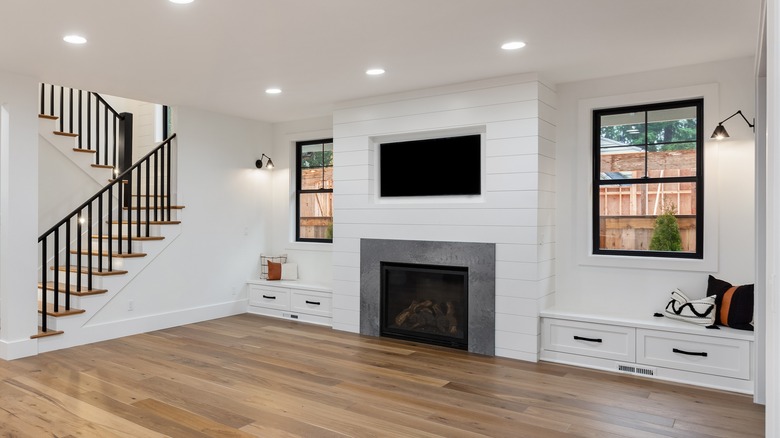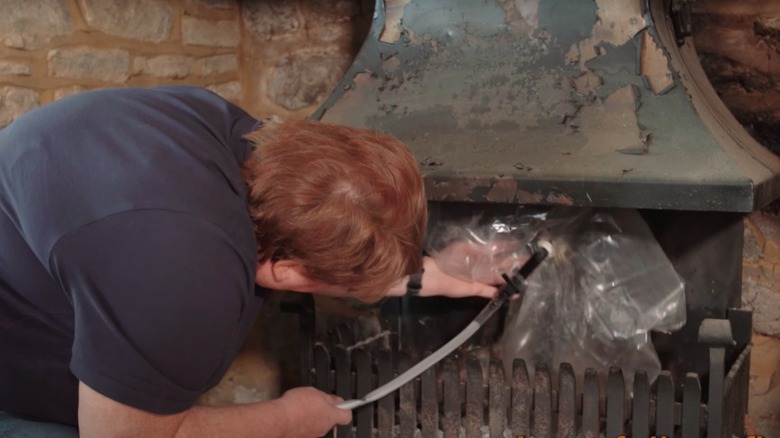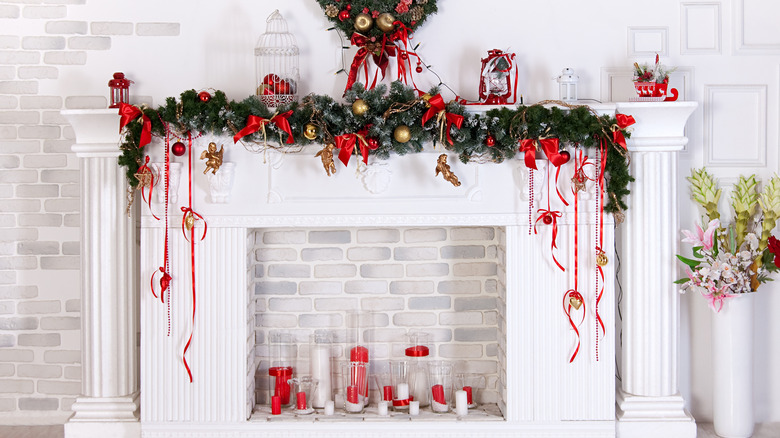How To Seal Your Drafty Fireplace To Save Money During Chilly Months
Having a fireplace in your home is often a source of pride. Not only can it keep you cozy on a cool night, but it delivers an ambiance that's tough to duplicate in other ways. However, if you are not using it regularly or if you don't feel comfortable using it, you may want to seal it. You have a few options for sealing the fireplace either permanently or temporarily.
Sealing a fireplace is one of a few different steps that you can take to help reduce your energy costs at home. Sealing it up, at least temporarily during the winter months, means you won't lose warmth from the furnace rising up the chimney. Simply inadvertently leaving the damper in the fireplace open after the fire dies down can cause as much as a 30% increase in your energy bills. Even with the damper closed because you are not creating fires inside the fireplace, you could attribute as much as 8% of your heating bill to the loss of warm air up the chimney, which highlights the importance of blocking it when you are not using it regularly. Anything you can do to prevent cold drafts inside the home, from sealing the chimney to installing energy-efficient windows, should help with your overall energy costs. Plus, when it's sealed and not being used, you can deploy any of your favorite ideas to decorate the fireplace without having to worry about heat issues damaging your decorations.
Options for sealing a fireplace temporarily to help with heating costs
A few different commercially available products can perform the job of temporarily sealing the drafty fireplace for you. Chimney balloons, also called chimney pillows, are available that can go inside the chimney above the flue, blocking drafts. You place the pillow into the fireplace opening with a handle and tube until it is above the flue. Then inflate it through a tube from the ground. Multiple sizes are available. This is a safe option, as it will pop loose and release upward if someone accidentally starts a fire.
Another temporary option is a fireplace blanket, which is a heavy cover that goes over the opening of the fireplace. It consists of fire-resistant materials, and it attaches with magnets to a metal screen you may already have at the opening of the fireplace. This material is thick and durable, helping to keep warm air inside the house from escaping upward, and it's easily removable if you want to start a fire.
Another option is to make your own temporary sealer for the opening. Purchase some insulating foam board that's large enough to fit the opening where the chimney meets the fireplace. Measure the opening and cut the foam board to fit tightly. If it won't quite stay in place on its own, use steel insulation springs to hold it properly. This material is made to block cavities in the home, so it's perfect for this use case.
How to permanently seal your fireplace opening when you are not using it
If you simply are not using your fireplace anymore, you have the option of sealing it permanently. Perhaps the chimney or fireplace has significant damage on the interior that will cost quite a bit to fix, so you'd rather just seal it. Additionally, fireplaces simply aren't very efficient when it comes to heating your home, so you may prefer to seal it up for good.
You can make your own insert that will block any drafts from coming through. The insert fits directly into the opening for the fireplace, and you then can decorate it or paint it however you want. Measure the opening and cut a piece of ½-inch plywood that fits closely. Then glue insulation to the back of the plywood. This can be a roll of insulation like you'd use inside a wall. Fill the interior of the cavity with more of the roll of insulation before placing your plywood insert into place. Use a clear caulk around the edge of the plywood to hold it in place and to fully close off the drafty air.
One additional option is to seal the damper inside the chimney. You may need to crawl inside the opening to the fireplace to do this process. Clean any dust away from the damper. Make use of silicone caulk to permanently seal all edges of the damper, so it cannot be opened again in the future.


